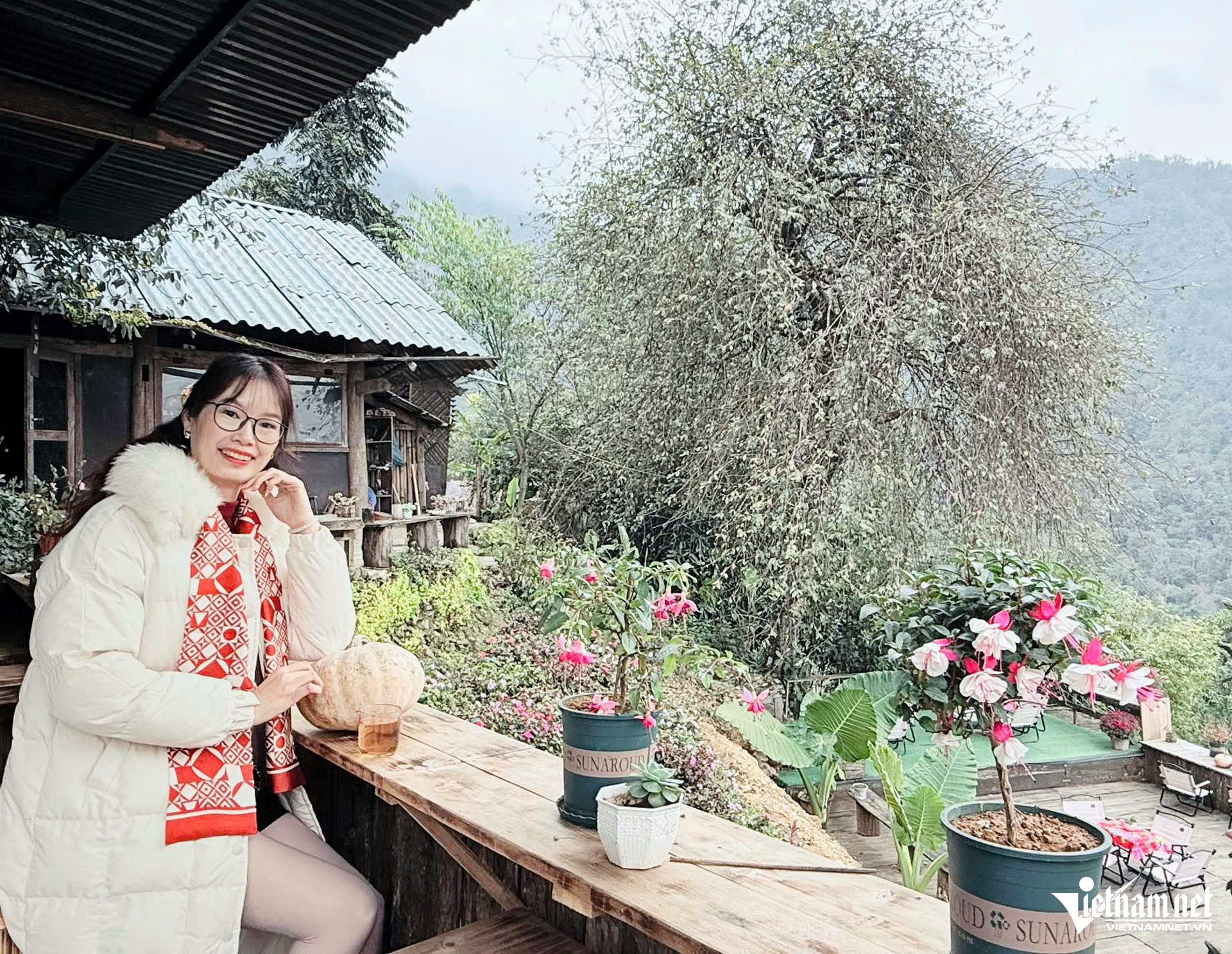Perched over 1,500 meters above sea level, the remote village of Sin Suoi Ho lies gently beneath the misty peak of Son Bac May in Lai Chau province. Here, the Hmong community has created a vibrant model of community-based tourism - done their own way.
A village chief welcomes guests from the U.S. and Singapore

The name Sin Suoi Ho translates to “the stream with gold,” and over time, this picturesque village in Phong Tho District has become a shining example of sustainable rural tourism in northern Vietnam.
In the past, the village was mired in addiction. “The forests in front of me used to be opium fields. People here were consumed by two kinds of intoxication - opium and alcohol. They would drink and smoke until they passed out,” said Vang A Dinh, a local homestay owner.
In 2004, Mr. Dinh quit opium entirely. His family’s life improved dramatically after they embraced community tourism.
Village chief Vang A Chinh is affectionately called “the captain” for leading Sin Suoi Ho’s transformation. When we tried to schedule an interview in late March, we were told to wait - he was busy hosting guests from the U.S., Singapore, Hanoi, and Ho Chi Minh City.
“Our homestays are fully booked for the April 30–May 1 holiday. The guests haven’t even arrived, but I’ve already spent their deposits,” Chinh said with a laugh.

Chinh is known as the village’s most adventurous soul. He brought attention to Sin Suoi Ho by showcasing the region’s breathtaking rhododendron forest. When a wildfire devastated the forest in early 2025, Chinh livestreamed an emotional appeal calling the entire village to battle the flames. “No one returns home until the fire is out,” he said, voice trembling.
Afterward, he urged locals to replant flowers to restore what was lost.
Always seeking to elevate the village’s appeal, Chinh recently discovered a hidden waterfall called Ma Quai Thang, which plunges dramatically from the cliffs above.
People follow Chinh not just for his vision, but for the tangible success he’s helped create.
With a philosophy of “self-sufficiency,” Chinh ensures locals benefit directly from tourism. The village’s cultural troupe is made up of local youth. Bonfires are ready nightly for guests. Most remarkably, the village has virtually given up alcohol - thanks largely to Chinh’s influence.
Today, nearly 40 of Sin Suoi Ho’s 157 households run homestays. Others provide supporting services such as embroidery, tool forging, farming, and livestock raising to cater to visitors.
Once mired in poverty, Sin Suoi Ho now counts 30% of its households as well-off or wealthy.
When the Hmong lead in tourism

Sin Suoi Ho is beautiful year-round. In spring, peach and plum blossoms scent the crisp mountain air. In summer, the skies are blue, the air unpolluted. Autumn brings golden terraced rice fields, whose fragrance floats through the misty hills.
At dawn, visitors can sip fresh-brewed coffee or ginger and herbal teas while wrapped in the soft mountain chill. Each visitor leaves with experiences that are truly one-of-a-kind.
This transformation did not happen overnight. Years of grassroots persuasion were needed to shift mindsets.
Today, villagers pave roads voluntarily, hang flower baskets along winding paths, and maintain spotless streets. Concrete roads wind like silk ribbons through the shade of old trees.
Locals have traveled to big cities to study English, hospitality, cooking, and etiquette - all in pursuit of a better tourism experience.

Sin Suoi Ho is now a harmonious blend of nature and human spirit. Most villagers no longer drink, smoke, or steal. Homes have no gates. Market stalls are left unattended - buyers pay by QR code or leave cash in a box. No one takes what isn’t theirs.
The village functions as one large family, with all residents sharing in tourism profits. Any household that disrupts planning regulations must restore their property to its original state.
What truly keeps travelers coming back are the traditional cultural elements preserved in their original forms: festivals, customs, dress, stone fences covered in moss.
This living heritage is Sin Suoi Ho’s most precious asset - one that has made it a “jewel of Lai Chau tourism” over the past decade.
Thu Trang